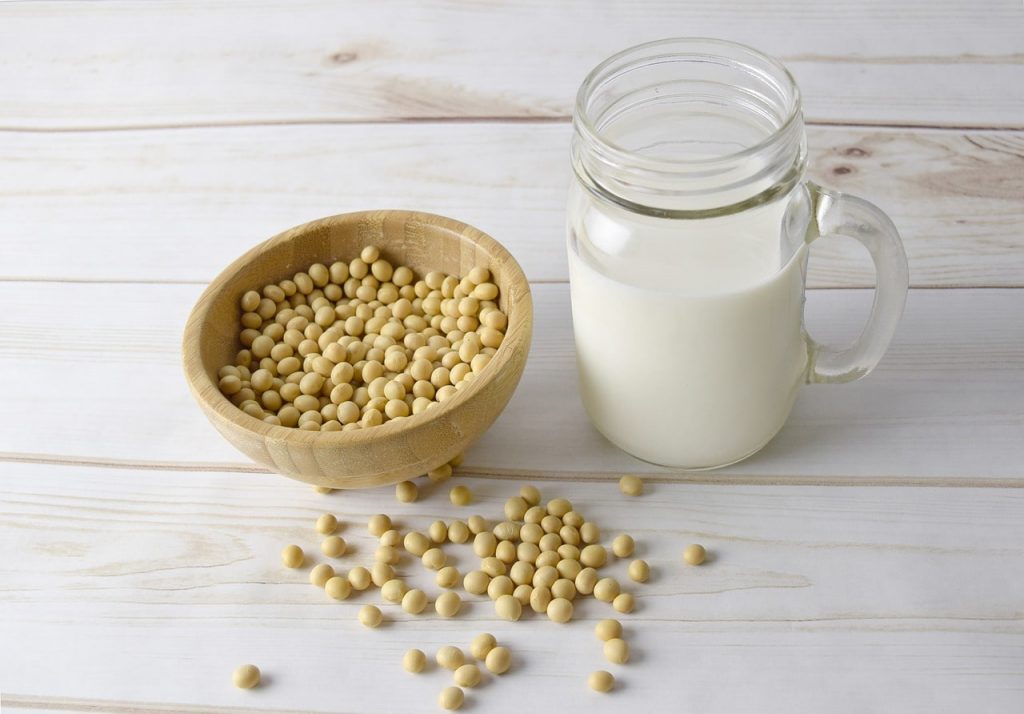There are many dairy-free milk options available for coffee drinkers, but which dairy-free milk option is the best choice for the environment? Some examples of these dairy-free coffees include almond milk, rice milk and soy milk. All these options have their own impacts on the environment which we will explore in this blog. Read on below to find out which non-dairy milk is the most environmentally friendly to use in your coffee.
Almond Milk
Almond milk has become very popular in recent years, with an increasing amount of dairy-free milk options appearing on supermarket shelves. But how environmentally friendly is almond milk? Creating dairy-free alternatives using almonds also has an environmental impact, since growing the nuts is water-intensive. Almond milk is also not necessarily healthier than dairy milk, it can be high in sugar and calories. Almond milk has been found to have the following environmental impacts: – 1.5kg CO²e of greenhouse gas emissions, which is higher than dairy milk – 1630g of water required, which is a lot of water when you consider that dairy milk requires 1400 litres per litre! – It takes 4.5 cups of almonds to produce one cup of milk, so not only is dairy milk more environmentally friendly than almond milk but dairy milk also requires less water. In addition, dairy milk takes 50% less energy to produce compared to almond milk!
Almonds are grown in California, which is now the biggest producer of almonds worldwide. It has overtaken even China as the leading almond producer. Unfortunately this rapid increase in demand for almonds has resulted in a number of negative impacts on the environment, including increased water usage and higher demands on labour.


Coconut Milk
Coconut milk has been around for a very long time and was often used by dairy farmers who wanted a dairy-free milk. The coconut – dairy connection started when dairy farmers would sell their dairy cow’s milk to the local dairy factory and use this money to buy coconuts from a farmer that they would then use to feed their dairy cows. One cup of coconut milk has been found to have the following environmental impacts: – 1kg CO²e of greenhouse gas emissions – 750 litres of water required, which is very high when you think that dairy milk requires 1400 litres per litre!
Soy Milk
This dairy-free milk alternative was another one that started to become popular in the early 90’s and soy beans were often fed to dairy cows in dairy farms. Soy milk tends to be higher in protein and lower in fat than dairy milk and is therefore popular with vegans who do not eat or drink dairy products for ethical reasons. Soy milk is a dairy-free option that has been around for a number of years. It is dairy-free and vegan, but it may contain GMO (Genetically Modified Organism) products. In addition to this soy beans require a lot of water to grow, which is a major environmental concern that is shared with the dairy industry. Another cause for concern with using soy beans is that they are grown in huge quantities around the world. In order to do this large parts of the Amazon Rainforest has been removed in order to make room for soy farms. Soy milk is generally better than dairy milk to use in your coffee however and this why it is one of the more popular dairy-free options.


Rice Milk
Rice milk was probably one of the first dairy-free milk options available when it became popular in the early 90’s. However, there are many dairy-free milk options available now. One cup of rice milk has been found to have the following environmental impacts: – 1.5kg CO²e of greenhouse gas emissions, which is higher than dairy milk. Rice milk is not as common as dairy milk, but it does have its place in the dairy-free market. It is vegan and comes in cartons. There are concerns over how much water rice needs to grow, which could make this dairy-free milk option unsustainable depending on the growing conditions. Despite this, we would advise going for rice milk over dairy in your coffee
Comparison to Dairy Milk
When comparing all of these non-dairy milk options to dairy milk to use in your coffee, there is a big difference. Cow’s milk has significantly higher impacts than the non-dairy alternatives across all metrics. It causes around three times as much greenhouse gas emissions and uses around ten times as much land; two to twenty times as much freshwater; and creates much higher levels of eutrophication! Although we may have mentioned some of the negatives from the available non-dairy options, all of them are much better for the environment than dairy milk. Dairy milk is responsible for 3.4% of global GHG emissions in the world and cow’s milk requires nine times as much land and produces three times as much carbon emissions than any non-dairy milk alternative!


Contact Us
Have questions about our coffee machine services? Our entire team receives specialised training regularly to ensure you are receiving the best service possible. From basic questions to complex enquiries, Espresso@Home are here to help!

